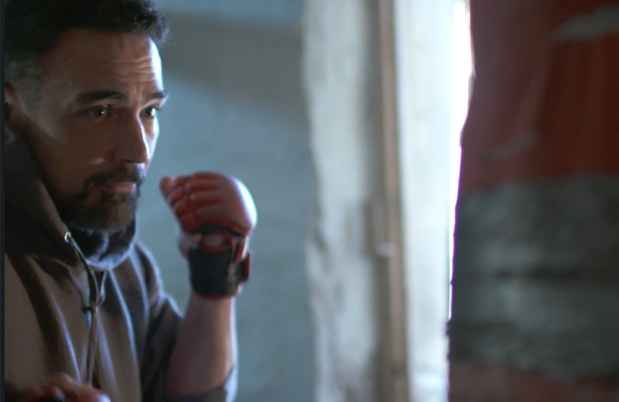McLean Embraces Telemedicine
When in-person treatment wasn’t possible, the hospital founds ways to continue much-needed care
July 14, 2021
In the chaotic early days of the pandemic, when federal and state regulators lifted a variety of legal barriers to telemedicine services, McLean Hospital programs raced to provide telemedicine to all levels of care
Within two weeks, McLean pivoted to telemedicine, with 100% of outpatient and partial treatment moving online, and inpatient services changing in fundamental ways.
What seemed to happen overnight took countless hours to achieve, with McLean Chief Information Officer Kara Backman’s team working with hundreds of McLean clinicians and the MGB Virtual Care team to ensure a smooth transition from in-person care to telehealth for McLean providers. In addition to establishing online capabilities, this also meant providing leadership in the development of system-wide policies and procedures related to the privacy and security of telehealth services.
“We’re fortunate that we’re part of a larger enterprise with Mass General Brigham, and we had tools readily available,” Backman said. “Our team had to figure out how to make these tools work for McLean and our workflows, especially where group therapy was involved.”
Although Backman and McLean Chief Medical Information Officer Alisa Busch, MD, MS, spearheaded the effort, they were quick to recognize other key players who were instrumental in setting up telehealth so rapidly at McLean. “We just could not have done what we did without our colleagues Maya Gotova, Lisa Horvitz, and Patty McGeary,” said Busch.
“It was awesome to watch clinical teams thinking not just how they could take what they normally do in person and move it onto a virtual platform, but also how they could use the tools available to help them in their work with patients,” explained Busch. Such changes included using breakout rooms for smaller discussions and sharing screens to distribute handouts.
Mona Potter, MD, a child psychiatrist at McLean, said her team has learned to innovate with the changes brought on by the pandemic. “It’s been fun to watch our team bond over creative ways to engage kids and teens virtually,” said Potter.
While telemedicine has been a game changer for outpatient and partial hospital (day program) treatment, it has also been important inside the inpatient and residential programs. Through the use of iPads, patients who need to be hospitalized can join group therapy from separate areas to remain physically distant, and providers who are not feeling well can still conduct therapy remotely. Such flexibility has helped maintain therapy continuity and staffing conditions, according to Busch.
Rachel B. Weiss, PhD, staff psychologist in the Behavioral Health Partial Hospital Program for adults, said that before the emergence of COVID-19, “my colleagues and I would have asserted that our partial hospital program could simply not be conducted via telemedicine.”
“Nine months later, I am amazed at what we were able to accomplish when we had no choice,” she added. “Through a collaborative process, we developed a virtual workspace that streamlines the technological experience for both clinicians and patients. In turn, we are able to stay focused on compassionate clinical care and to stay fully present with patients, even through a computer screen.”
The Future of Telemedicine
Will McLean continue with telemedicine once the pandemic is over? Busch said the decision will depend in part on whether federal and interstate barriers remain lifted once the emergency has passed. Another aspect involves a hotly debated health policy conversation on how telemedicine can best help people get the care they need.
“There are some things to be worked out,” she said. “But from a health policy perspective, our hope is that we can continue to do this.” Busch added that it is clear that telemedicine is useful for providing care to certain patients. “We hope that, post-pandemic, telemedicine will continue to be a tool in our toolbox so that we can continue to provide these services to patients when it is clinically appropriate.
Pathways Academy
Transitions are challenging for people with autism spectrum disorders, including those attending Pathways Academy, a school for individuals 6-22 years of age on McLean’s Arlington campus.
“Throughout the program’s history, we have been proud of our close relationship with students’ families—it is one of collaboration, communication, and trust,” said Roya Ostovar, PhD, director of Pathways Academy. “It was no different last March, when we were making the difficult decision of moving to remote learning and delivery of clinical services.”
Pathways began communicating with the families of their students, informing them of the decision-making process every step of the way. Likewise, staff kept working with the students, supporting them through the difficult transition. Many were glad that if they had to attend school, they could do so remotely.
“We have many students with significant anxiety—not wanting to leave the house and feeling much more comfortable learning from home,” said Educational Administrator Laura D. Mead, MSEd.

Whether in person or online, students at McLean’s Arlington School, pictured here, and at Pathways Academy, find a supportive environment
Since Pathways opened in 2000, students have met in small classes to learn coping and self-regulation strategies in addition to academics. Pathways may have moved online, but, along with arithmetic and algebra, language arts, science, social communication skills, sensory integration, daily living, and self-care are still taught by the school’s staff. And they focus on the most important thing of all—meeting students where they are.
Pathways staff immediately sent educational material to students by mail. Within days, they set up online learning platforms, including IXL, a 24/7 program for mathematics, English language arts, science, and history. They even considered how the new remote approach could enhance education. With the addition of pods, students meet in small groups based on preferred topics, such as Legos or music. Additionally, students continue to receive direct services online for occupational and speech therapy.
Staying Connected Through the Pandemic
“We made sure to stay connected and provide support—not just to our students, but also to their families—during these challenging times,” Ostovar said. “Our clinical and educational staff have gone above and beyond the call of duty to consult with the families, giving them the tools they need to in turn support their children at home.”
According to Karen Steves, MS, Pathways milieu manager, students whose attendance was less than stellar in person are now attending class regularly. “It’s nice to see kids we weren’t getting on a regular basis coming into class,” she said.
For some, the change is a matter of “absence makes the heart grow fonder.” Other students simply find it easier to connect online.
Not only did the entire original Pathways student body of 28 children move to online learning, but the program also has onboarded numerous students since the pandemic began.
“You guys are all amazing! Thank you for your effort and dedication during this extremely unprecedented time,” wrote one parent, who requested to remain anonymous to protect their child’s identity.
“Your commitment to these kids and to their families so far exceeds what we ever imagined it would look like, especially because we understand and appreciate that you are all coping with these major life-impacting challenges yourselves as well. From the bottom of our hearts, thank you. You all have contributed in preventing this bad situation from being something much worse.”
Transitioning to Telemedicine: A Patient’s Experience
Clark, 72, has attended individual and group therapy sessions weekly at McLean since 2016 when he attended the addiction partial hospital program for treatment for alcohol use disorder.
“I was ready to do something because alcohol was really screwing up my life,” Clark said.
Through the caring support of his psychiatrist, Olivera J. Bogunovic, MD—medical director of McLean’s Alcohol, Drug, and Addiction Partial Hospital Program—support group facilitators, and peers, Clark has been able to make positive changes in his life and work toward recovery.
Clark was surprised by how quickly McLean shifted its care to a remote platform, which happened within a week. Although he missed aspects of in-person contact with his clinicians and peers, he said, “It wasn’t a huge letdown. I already had relationships with the people I was interfacing with.”
Bogunovic agreed that a sense of community, even if it must be online for now, is critical for people who are recovering from substance use disorders. “Prior to the pandemic, I worried about using telehealth to treat patients,” she said, adding however, that when the pandemic struck, she and her colleagues were able to use the technology to provide essential care. “We could even offer services to people who would not usually be able to receive care at McLean because of travel or scheduling constraints.”

During the pandemic, Clark has been able to maintain a connection to McLean via telemedicine
Bogunovic said the isolation was particularly challenging for older adults who are retired and may not have the structure jobs can provide.
Another factor to consider: In contrast to young people, who tend to be socially engaged on social media, older people often prefer in-person contact.
The ability to receive telehealth through McLean has been a lifeline, one that Clark wishes everyone could have.
“The people I’ve met at McLean care uniformly,” he said. “Dr. B., Linda Marucci (admissions coordinator), and the young fellows who are part of the intensive group therapy groups are marvelous.”
He said he worries about the well-being of clinicians who have been working hard through the crisis and for all the people who still need to be connected to mental health care. “This pandemic is not going to be over for a very long time,” he said. “There is a great deal of trauma and pain out there.”
Media Requests
Journalist or member of the media? We are available 24/7 for media requests.



